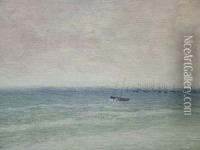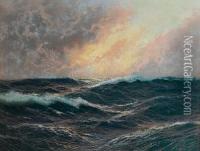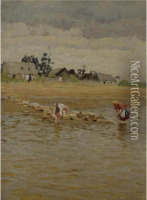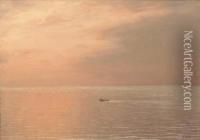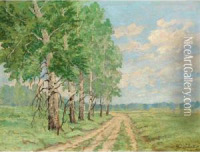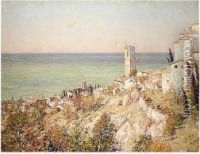Nikolai Nikanorovich Dubovsky Paintings
Nikolai Nikanorovich Dubovsky was a Russian landscape painter born on December 5, 1859, in the city of Mykolaiv, part of the Russian Empire (now in Ukraine). Dubovsky showed an early interest in art and pursued his passion by studying at the Imperial Academy of Arts in Saint Petersburg. Under the tutelage of prominent artists such as Mikhail Konstantinovich Clodt, he honed his skills and developed a distinctive style that focused on the natural beauty and vastness of the Russian landscape.
During his time at the Academy, Dubovsky was awarded several medals for his work, which allowed him to travel abroad and further his studies. He traveled through Europe, including a significant period in Italy, where the Renaissance masters influenced his approach to composition and color. Upon returning to Russia, Dubovsky became a member of the Peredvizhniki (Wanderers) movement, a group of realist artists who sought to engage with the public through traveling exhibitions, depicting scenes of everyday life and the Russian countryside.
Dubovsky's landscapes are characterized by their tranquil and often idyllic representations of rivers, forests, and rural areas. He had a refined ability to capture the changing moods of nature, using light and color to create atmospheric effects. His works often evoke a sense of nostalgia and peace, inviting viewers to contemplate the serene beauty of untouched landscapes.
Aside from his artistic endeavors, Dubovsky also engaged in educational activities. He taught at various institutions, including the St. Petersburg Society for the Encouragement of Arts, where he influenced a new generation of Russian artists. His commitment to art education and his role in the Peredvizhniki movement made him an important figure in the development of Russian landscape painting.
Nikolai Nikanorovich Dubovsky's life was marked by his dedication to capturing the essence of the Russian wilderness. His work remains significant for its contribution to the genre of landscape painting and for reflecting the cultural and social spirit of his time. Unfortunately, Dubovsky's life came to an end during the turbulent period of the Russian Civil War, and he passed away on January 30, 1918, in Petrograd (now Saint Petersburg), leaving behind a legacy of artistic excellence that continues to be appreciated by art historians and enthusiasts alike.
